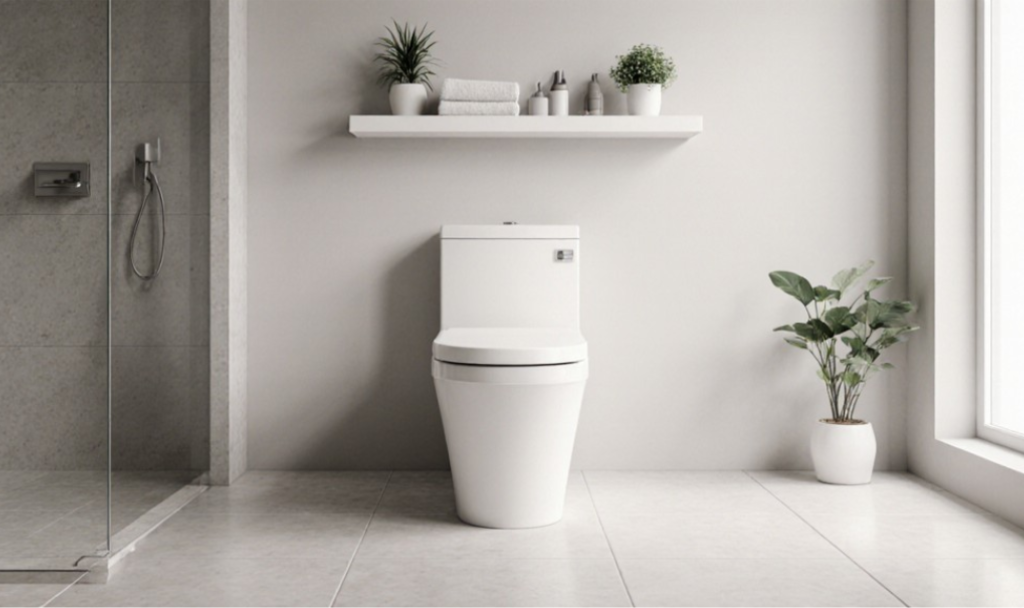
How to Choose the Right Toilet: A Comprehensive Guide
Choosing the Perfect Toilet for Your Bathroom
The right choice of plumbing affects not only our comfort, but also water saving and ease of use. Today, in most home improvement or plumbing stores, you can find a large selection of toilets for any type of bathroom - from classic models to modern wall-hung toilets. But the question arises, how to choose a really good toilet for a home, office, or service facility?
Main types of toilets
When choosing the optimal option, it is worth starting by familiarizing yourself with the main types of toilets and their advantages. A clear understanding is necessary because modern toilets differ not only in their design, but also in the method of installation, the shape of the bowl, and the type of drain.
Floor-mounted toilets
As you can guess from the name, these toilets are installed on the floor. For many years, floor-mounted toilets have been a reliable option for any premises, and their stability and durability allow them to be used for many years without requiring replacement or repair.
Floor-mounted toilets are used almost everywhere: in apartments, private houses, hotels, and administrative buildings. This is not surprising; the main reason for their popularity is that they are easy to install and are suitable for various sewerage systems, and are easily integrated into any interior. The only disadvantage of this type is its noise. Usually, when flushing water in floor-mounted toilets, the sounds are audible not only in the bathroom or toilet, but also through the wall.
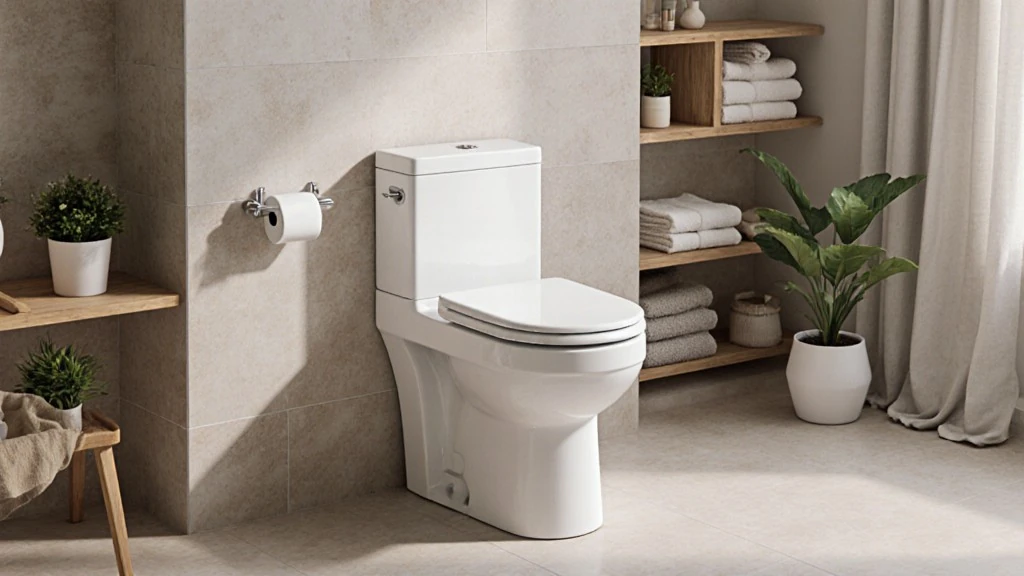
Wall-hung Toilets
Unlike the previous type, wall-hung toilets are attached to a metal frame (the installation of which is hidden in the wall), and their bowl does not touch the floor. The tank, pipes, and other connections are hidden behind a stud wall(false wall), which makes the interior look neat and minimalist.
In addition to aesthetics, this system saves space, facilitates the cleaning process, and almost completely eliminates the noise from the water drain. However, it also requires more precise installation and professional planning (especially if installed not during renovation).
Today, wall-hung toilets are becoming increasingly popular in modern interiors of apartments, offices, restaurants, and hotels.
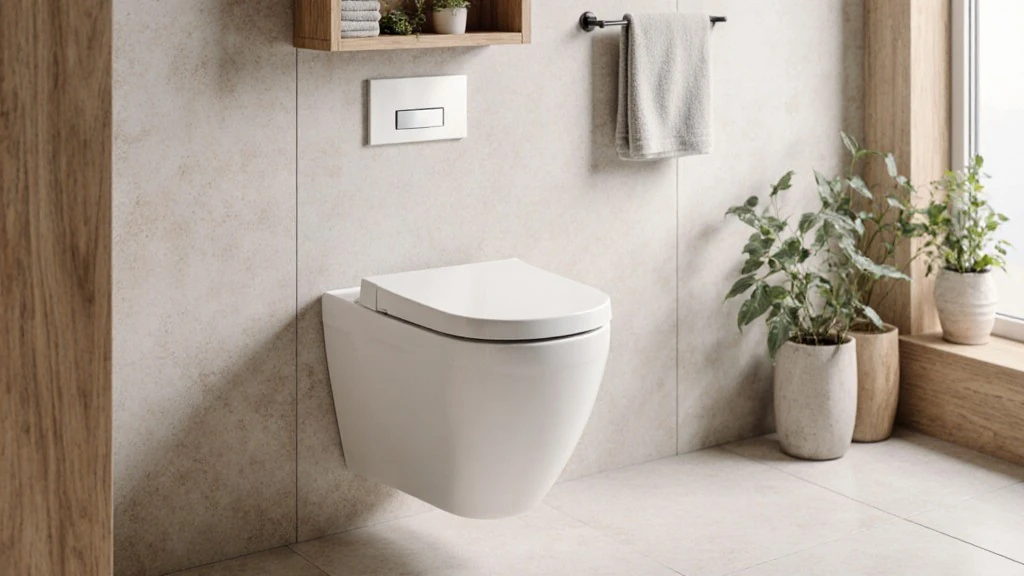
Output types
There are 3 main ways a toilet can be connected to the sewer:
- Horizontal outlet
- Vertical outlet
- Oblique outlet

Each type of outlet requires a corresponding drain into the sewer.
We recommend buying a toilet in the physical stores, where consultants will help you choose the appropriate connection kit for your pipe type and layout.
Recommended sizes and correct placement of the toilet
If you are choosing a toilet, you should also think about how to position it correctly to ensure comfortable and safe use:
- The gap from the walls to the drain pipe should be 15-25 cm. This is necessary so that the toilet can connect to the sewer channels and water supply without obstacles. If the distance is less, it can lead to twisting of the hoses and leakage.
- The optimal distance from the center of the toilet to the side walls or furniture is 35 - 40 cm to ensure comfortable use and avoid a feeling of tightness.
- Plumbing experts recommend leaving at least 60 cm of free space in front of the toilet; this will provide additional comfort and easy access for cleaning.
- The minimum distance to other appliances in the room, such as sinks or bidets, should be at least 25 cm.
Bowl Types
Rimmed toilets
This is a classic version of the bowl, in which the upper edge has an internal protrusion called the "rim", and it is under it that the water flow passes during flushing. These models have a stable and proven design that ensures reliable flushing and is suitable for any sewerage system. The main advantages of rimmed toilets are their affordable price, wide selection of designs, and ease of replacement. At the same time, the rim is a place where moisture, plaque, and bacteria accumulate over time, so you need to clean the area under it more thoroughly during cleaning.
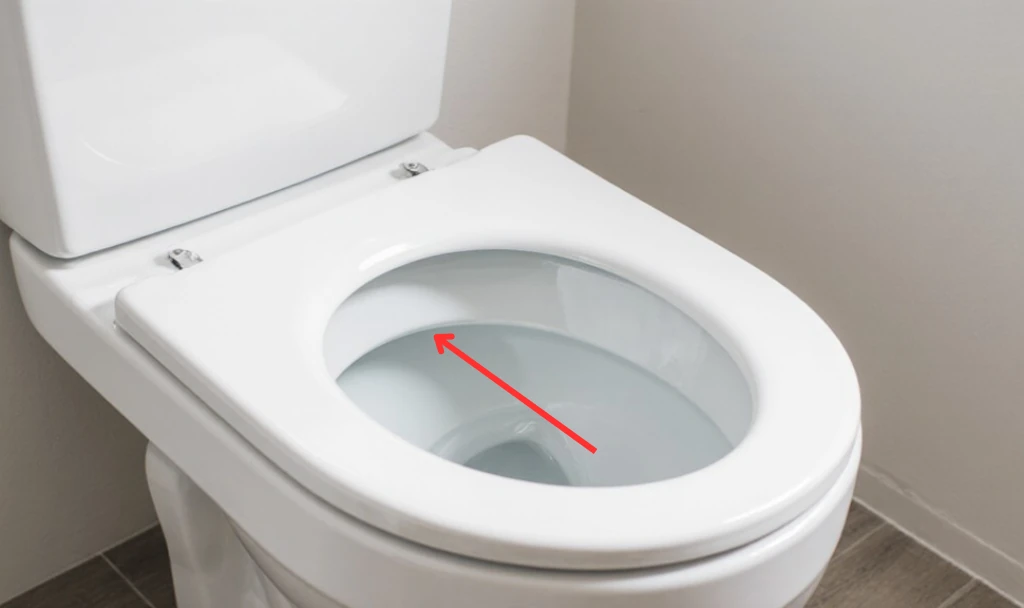
Rimless toilets
A modern alternative to the traditional design. In this type, the drain water moves through an open channel, flushing the surface evenly throughout the bowl. Because of this, rimless toilets are more economical in water consumption, more hygienic, and easier to care for. The only disadvantage of rimless toilets is their higher price compared to classic models.
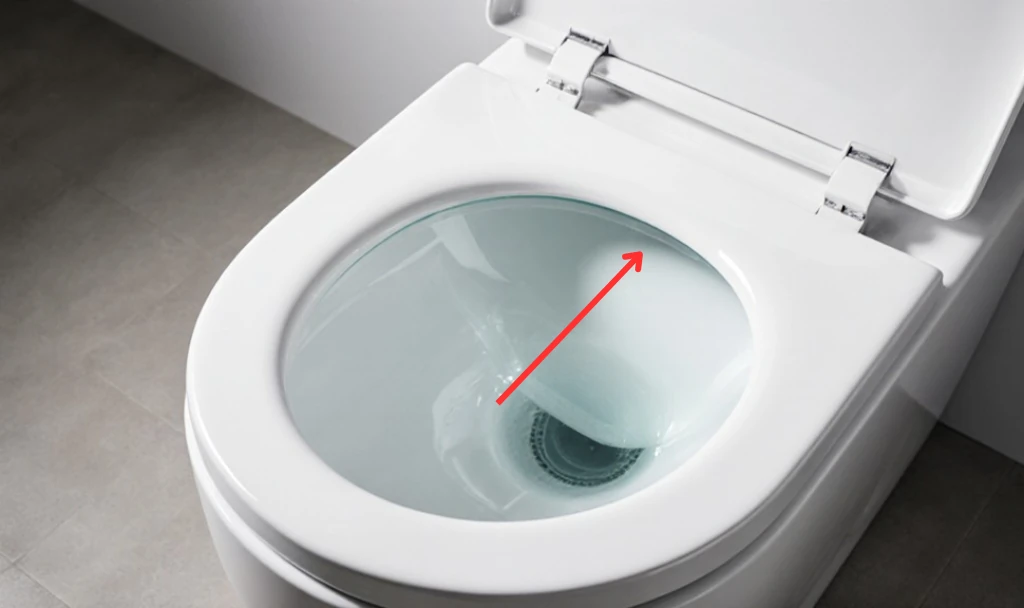
Types of internal bowl geometry
There are three main types of internal bowl geometry in toilets:
- Plate(Shelf) bowl - this is a type of bowl with a "plate" (or it is also called a "shelf"), on which part of the waste initially settles, and then is washed away by a stream. During use, there are almost no splashes in this model thanks to the convenient plate. But due to its shape, waste can linger, and therefore, the smell can be felt more strongly if the flush is weak.
- Funnel-shaped bowl - in this model, the drain hole is located approximately in the center or closer to the middle, and the bowl is more "fallen" inside. In this form, waste immediately enters the water and stagnates less, which ensures greater hygiene. But compared to the previous bowl, in this mode, the risk of "splash" is higher if the water falls very aggressively.
- Visor bowl - the back wall of this bowl is curved at a shallow angle, and the front is more inclined. This helps direct waste to the drain hole, but minimizes the risk of splashing. These models maintain a good flush; unpleasant odors do not accumulate, as in plate bowls, and overall better hygiene.
Toilet manufacturing materials
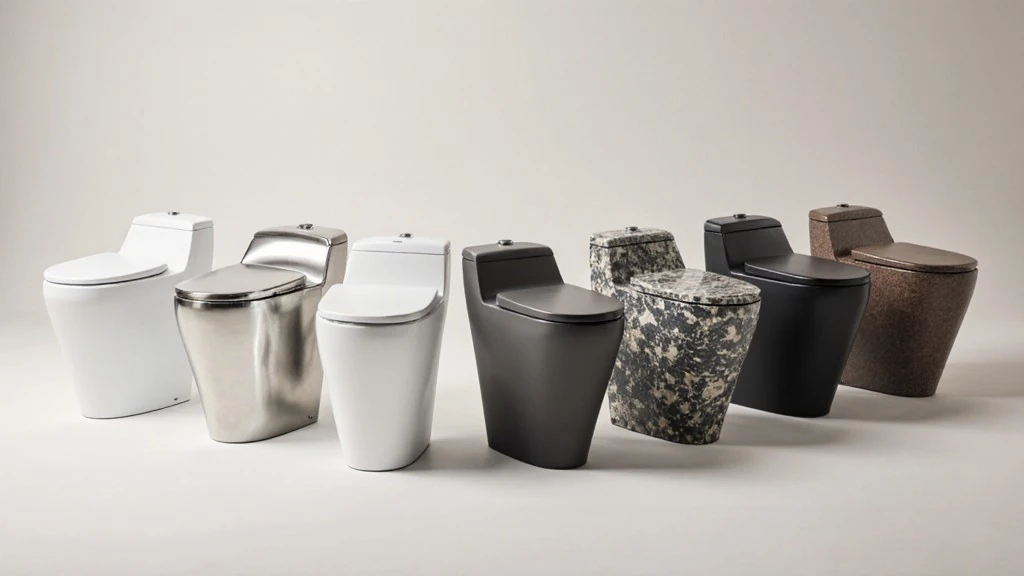
Faience
Faience is one of the most practical and convenient materials for the manufacture of toilets. Plumbing from this material has a smooth glazed surface and is resistant to moisture and household chemicals. It retains its color well for many years and is easy to care for, but the disadvantage of the material is its porous base structure. Because of this, over time, faience can absorb unpleasant odors with insufficient care and lose its original shine.
Porcelain
Porcelain is considered a more durable material. It is a durable material that almost does not absorb moisture, and retains its shine longer due to its finer structure. Porcelain also has a surface resistant to scratches and plaque, but the price is usually higher than that of earthenware models.
If you are looking for a practical option for daily use and at an affordable price, faience is the best option. For a long service life and an elegant look, porcelain is better.
Stainless steel
Stainless steel toilets are highly durable and easy to care for. Models made of this material are usually installed in public places or industrial premises, where durability and hygiene are important. However, such toilets have a cool surface and a specific design, so they are rarely chosen for the home.
Artificial stone
Such toilets combine hygiene and a premium look, so they are often used in designer bathrooms, hotels, or modern interiors. They are much more expensive than previous options and require careful handling due to their sensitivity to damage.
The best toilet manufacturers
Cersanit is one of the largest manufacturers of sanitary ware in Europe, Asia, and Africa. The company is actively involved in the production of products for bathrooms and other premises.
Advantages:
- A large range of products for bathrooms.
- High quality is recognized in Europe.
- Affordable price
Duravit AG is a German company that is one of the world's leading manufacturers of sanitary ware with extensive experience in the production of designer bathrooms. Duravit products combine quality, design, and technology.
Advantages:
- 200 years of experience in the production of sanitary ware.
- Stylish and comfortable design
- Availability of production worldwide
Sensea is a brand that offers a wide range of products, from toilets to accessories. Sensea is known for its high quality and functionality.
Advantages:
- A large range of products for bathrooms
- Stylish design and convenient features.
- Affordable prices.
It is not difficult to get lost among a large number of models, but understanding the basic types, materials, their advantages and disadvantages, allows you to make an easy, and most importantly, balanced choice and choose the best option that will meet your needs, requirements, and wallet.
A correctly chosen toilet is about combining functionality and style, which affects our everyday comfort and convenience. Today, home improvement and plumbing stores present a large selection of toilets and plumbing, from classic floor-mounted models to modern wall-hung systems with various types of bowls and materials. Thanks to a large assortment, clear characteristics, and expert advice, every buyer can easily choose the best option for themselves.


